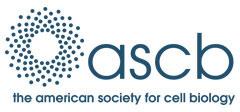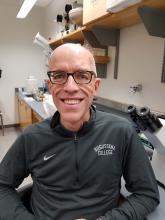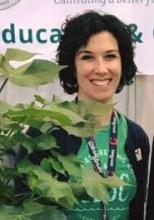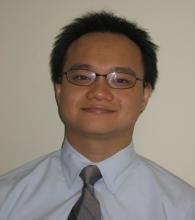Cell Biology
The study of the formation, structure, components and function of cells.
Members of the American Society of Cell Biology have worked with CourseSource to create a Learning Framework for the Cell Biology course. The table below lists the learning goals and objectives that the Society agrees any undergraduate biological sciences major should know about Cell Biology by the time they graduate.
The following people worked to develop this society-approved Cell Biology Learning Framework:
Alison Adams (Northern Arizona University), Robert Brooker (University of Minnesota), Jennifer Carney (Finger Lakes Community College), Bradley Hyman (University of California), Michael Klymkowsky (University of Colorado), Kathryn Miller (Washington University), Susan Singer (Carleton College), Kimberly Tanner (San Francisco State University), Michael Wolyniak (Hampden-Sydney College), and Sue Wick (University of Minnesota).
Download the Cell Biology Learning Framework
American Society of Cell Biology
The American Society of Cell Biology (ASCB), founded in 1960, is an inclusive, international community of biologists studying the cell, the fundamental unit of life. They are dedicated to advancing scientific discovery, advocating sound research policies, improving education, promoting professional development and increasing diversity in the scientific workforce.
Course Editor(s):
Cell Biology Learning Framework
Society Learning Goals
Articles
Membrane Structure and Function
How do varied membrane composition and the structural features of component macromolecules in different cells contribute to membrane function?
Sample Learning Objectives- Draw the structure of a lipid and explain how the structure allows a lipid bilayer to spontaneously assemble in an aqueous environment.
- Explain the importance of membrane lipid and protein component structural asymmetries in membrane function.
- Describe the process by which membranes grow, are turned over, or are absorbed.
- Explain why different membranes have different lipid and protein constituents.
How do solutes and other materials move across membranes?
Sample Learning Objectives- Given a set of molecules of differing solubility in water, predict their relative rates of diffusion across a membrane bilayer.
- Compare and contrast the properties and functions of channels and carriers.
- Given data about the relative concentrations of solutes on both sides of a membrane, predict the direction of solute flow.
- Design an experiment that distinguishes between different modes of crossing the membrane, such as diffusion, facilitated diffusion, and active transport.
- Osmosis Through the Lens of Sexual Health
- An Original-Design Board Game to Increase Student Comprehension of Cellular Respiration Pathways
- Engaging Undergraduates in Mechanisms of Tubular Reabsorption and Secretion in the Mammalian Kidney
- Necessary and Sufficient? Solving the Mystery of the Mitochondrial Pyruvate Transporter
- Lights, Camera, Acting Transport! Using role-play to teach membrane transport
Nuclear Structure and Function
How does the structure of the nucleus affect chromosome organization and gene expression?
Sample Learning Objectives- Describe the arrangement of chromosomal DNA in the nucleus and how it changes during the cell cycle.
- Compare and contrast how the presence of a nucleus in eukaryotes and its absence in prokaryotes alters the dynamics of gene expression.
- Design an experiment to demonstrate the role of the nuclear pore complex.
- From an evolutionary perspective, propose a mechanism that gave rise to the eukaryotic nucleus.
- Diagram where ribosomal components are synthesized and where they are assembled.
Cytoskeleton Structure and Function
How do the different components of the cytoskeleton support a variety of cell functions, such as cell shape, division, movement, sensing the environment, and cell-cell communication?
Sample Learning Objectives- Compare the characteristics and functions of microfilaments, microtubules, and intermediate filaments.
- Compare the structure and dynamic properties of microtubules versus actin and how these properties contribute to the different functions of these polymers in cells.
- Explain how motor proteins harness energy to move along cytoskeletal tracks.
- Understanding the Importance of Microtubules in Normal Cell Division: Chemotherapy Connection
- Using Immunocytochemistry and Fluorescence Microscopy Imaging to Explore the Mechanism of Action of Anti-Cancer Drugs on the Cell Cycle
- A virtual laboratory on cell division using a publicly-available image database
- Inexpensive Cell Migration Inquiry Lab using Zebrafish
Cell Cycle and Cell Division
How do cells conduct, coordinate, and regulate nuclear and cell division?
Sample Learning Objectives- Predict how a mutation or other functional alteration in a cytoskeletal protein will affect the progress of nuclear and cytoplasmic division.
- Defend the argument that the presence of a cell wall in plants and fungi requires a different method for dividing the cytoplasm than that used in animals.
- Evaluate the relative contribution of mutations in tumor suppressor genes and proto-oncogenes in the development of cancer.
- Assess the usefulness and limitations of information obtained from several experimental techniques (i.e., TEM, atomic force microscopy, fluorescent antibody labeling, and confocal fluorescence time lapse microscopy) in dissecting cytoskeletal roles in nuclear and cell division.
- Compare different methods used to coordinate cell division in different cell types.
- Compare and contrast organization of the mitotic spindle in animal, fungal, and plant cells and discuss the evolutionary and functional relevance.
- Understanding the Importance of Microtubules in Normal Cell Division: Chemotherapy Connection
- Using Immunocytochemistry and Fluorescence Microscopy Imaging to Explore the Mechanism of Action of Anti-Cancer Drugs on the Cell Cycle
- A virtual laboratory on cell division using a publicly-available image database
- GMC: Genes, Mutations and Cancer - Group Concept Map Development
- Meiosis: A Play in Three Acts, Starring DNA Sequence
- Building a Model of Tumorigenesis: A small group activity for a cancer biology/cell biology course
- Sex-specific differences in Meiosis: Real-world applications
Cell Communication
How do cells send, receive, and respond to signals from their environment, including other cells?
Sample Learning Objectives- Explain how a cell’s interactions with its environment can influence cell morphology, behavior, division, or survival.
- Compare and contrast the molecular mechanisms of membrane receptor-mediated and nuclear receptor-mediated signal transduction.
- Describe different mechanisms by which a membrane-bound receptor can affect cell physiology or behavior.
- Choose an everyday human experience and explain how it is mediated by cellular changes due to an external signal.
- Describe how the presence of gap junctions alters cellular responses to extracellular signals.
- A Structured Inquiry-Based Module for the Undergraduate Cell Biology Laboratory That Teaches Fundamental Concepts of Cell Differentiation
- Bacteria to Brains in Backyard Coyotes: An Interdisciplinary Pedagogical Case Study
- Single Cell Insights Into Cancer Transcriptomes: A Five-Part Single-Cell RNAseq Case Study Lesson
- Investigating Cell Signaling with Gene Expression Datasets
- Using a Sequential Interpretation of Data in Envelopes (SIDE) approach to identify a mystery TRP channel
- Cell Signaling Pathways - a Case Study Approach
Matter & Energy Transformation
How do cells transform energy and cycle matter?
Sample Learning Objectives- List the types of energy used by cells and give examples of when / in what cells / situations the different energy sources are used.
- Explain why energy transformations are necessary in the cell.
- Diagram the energy transformations used in glycolysis, respiration and photosynthesis in a plant cell.
- Explain how cyanide, an electron transport chain inhibitor, impacts oxygen consumption within animal cells.
- Glycolysis Can Be Fun: Rediscovering Glycolysis as a Problem-Solving Introduction to Metabolism
- An Original-Design Board Game to Increase Student Comprehension of Cellular Respiration Pathways
- Breaking Bricks: A Hands-On Model of Enzyme Kinetics and Inhibition
- Using Place-Based Economically Relevant Organisms to Improve Student Understanding of the Roles of Carbon Dioxide, Sunlight, and Nutrients in Photosynthetic Organisms
- Evaluating the Quick Fix: Weight Loss Drugs and Cellular Respiration
Cellular Specialization
How can and why do cells with the same genomes have different structures and functions?
Sample Learning Objectives- Describe how differential gene regulation causes cell differentiation.
- Compare and contrast the structure and function of different cell types.
- Predict how a drug with a known target would affect the function of a specific cell type (e.g., a neuron).
- Evaluate the strength and limitations of pieces of evidence in support of the claim that a particular inherited diseases affects a specific cell type.
- Evaluate the benefits of cell specialization in organisms with varying degrees of complexity.
- Evaluate evidence in support of the claim stem cells have great potential in the treatment of a variety of human diseases.
- A Structured Inquiry-Based Module for the Undergraduate Cell Biology Laboratory That Teaches Fundamental Concepts of Cell Differentiation
- Splicing it Together: Using Primary Data to Explore RNA Splicing and Gene Expression in Large-Lecture Introductory Biology
- A 360˚ View of COVID-19
- Using the Cell Engineer/Detective Approach to Explore Cell Structure and Function
- Online Adaptation of the Cell Engineer/Detective Lesson
- Bad Cell Reception? Using a cell part activity to help students appreciate cell biology, with an improved data plan and no loss in coverage
Multicellularity & Cell Connections
How do cells connect to each other and organize to function as a collective entity?
Sample Learning Objectives- Differentiate the ways plant, animal and fungal cells are connected to each other and exchange materials independent of membrane transport.
- Evaluate the claim that colonial organisms are multicellular.
- Compare and contrast cell communication in unicellular and multicellular organisms in response to pathogens, symbionts, and physical and chemical signals.
- Evaluate the importance of cell-cell communication in coordinating function in multicellular organisms.
- Given an example of apoptosis, analyze its potential effect on fitness of the organism.
Protein Targeting & Trafficking
How are cellular components targeted and distributed to different regions and compartments of a cell?
Sample Learning Objectives- Discuss the differences in structure of a protein occupying its target destination in the cell and immediately after translation from the mRNA.
- Explain the mechanism and function of the unfolded protein response and its value to the cell.
- Compare the general mechanisms that allow some newly synthesized proteins to be released into the cytoplasm, whereas others are directed into other cellular compartments.
- Identify the different cellular compartments in a eukaryotic cell and their main functions in the cell.
- Analyze data to determine the path taken by a protein that normally resides in an organelle/compartment or is secreted from the cell from its site of synthesis to its final destination.
- Given data on effects of drugs and other functional manipulations on entry of various molecules and particles into the cell, determine what pathway is used for entry.
- Compare the molecular recognition events and mechanisms required for movement of proteins through different uptake and secretion pathways.
- Protein Import Into the ER: Understanding Experimental Methods for Old and New Cellular Discoveries
- A Structured Inquiry-Based Module for the Undergraduate Cell Biology Laboratory That Teaches Fundamental Concepts of Cell Differentiation
- Learning About Protein Localization: A Lesson for Analyzing Figures in a Scientific Publication
- Translating Co-Translational Translocation
Evolutionary History of Cells
How does evolutionary history explain the similarities and differences among cells?
Sample Learning Objectives- Evaluate data about the evolutionary relatedness among eukaryotes, archaea, and bacteria, including caveats or limitations.
- Evaluate the case for cytoskeleton evolution from bacterial components.
- Describe the major types of genomic changes that are important in cellular and organism evolution.
- Compare and contrast cellular structure and function in eubacteria, archaea and eukaryotes in the context of their evolutionary history.
- Construct an explanation for the interrelatedness of photosynthesis and respiration in an evolutionary context.
Methods & Tools of Cell Biology
How do the methods and tools of cell biology enable and limit our understanding of the cell?
Sample Learning Objectives- Assess the usefulness and limitations of information obtained different types of microscopy.
- Describe different strategies to break open cells and isolate cellular organelles.
- Give an example of how the study of temperature-sensitive mutants was instrumental in elucidating the details of a cellular pathway.
- Protein Import Into the ER: Understanding Experimental Methods for Old and New Cellular Discoveries
- A Structured Inquiry-Based Module for the Undergraduate Cell Biology Laboratory That Teaches Fundamental Concepts of Cell Differentiation
- Understanding the Importance of Microtubules in Normal Cell Division: Chemotherapy Connection
- Fatty Acid Induction of Lipid Droplets in Cancer Cells
- Does Organelle Shape Matter?: Exploring Patterns in Cell Shape and Structure with High-Throughput (HT) Imaging
- Single Cell Insights Into Cancer Transcriptomes: A Five-Part Single-Cell RNAseq Case Study Lesson
- Learning About Protein Localization: A Lesson for Analyzing Figures in a Scientific Publication
- Using a Primary Cell Culture Model to Study the Neural Extracellular Matrix
- Going Remote: An Online Adaptation to Using a Primary Cell Culture Model to Study the Neural Extracellular Matrix
- A CRISPR/Cas Guide RNA Design In Silico Activity
- Using Immunocytochemistry and Fluorescence Microscopy Imaging to Explore the Mechanism of Action of Anti-Cancer Drugs on the Cell Cycle
- Necessary and Sufficient? Solving the Mystery of the Mitochondrial Pyruvate Transporter
- Translating Co-Translational Translocation
- A virtual laboratory on cell division using a publicly-available image database
- Using a Sequential Interpretation of Data in Envelopes (SIDE) approach to identify a mystery TRP channel
- Investigating the Function of a Transport Protein: Where is ABCB6 Located in Human Cells?
- Using Yeast to Make Scientists: A Six-Week Student-Driven Research Project for the Cell Biology Laboratory





